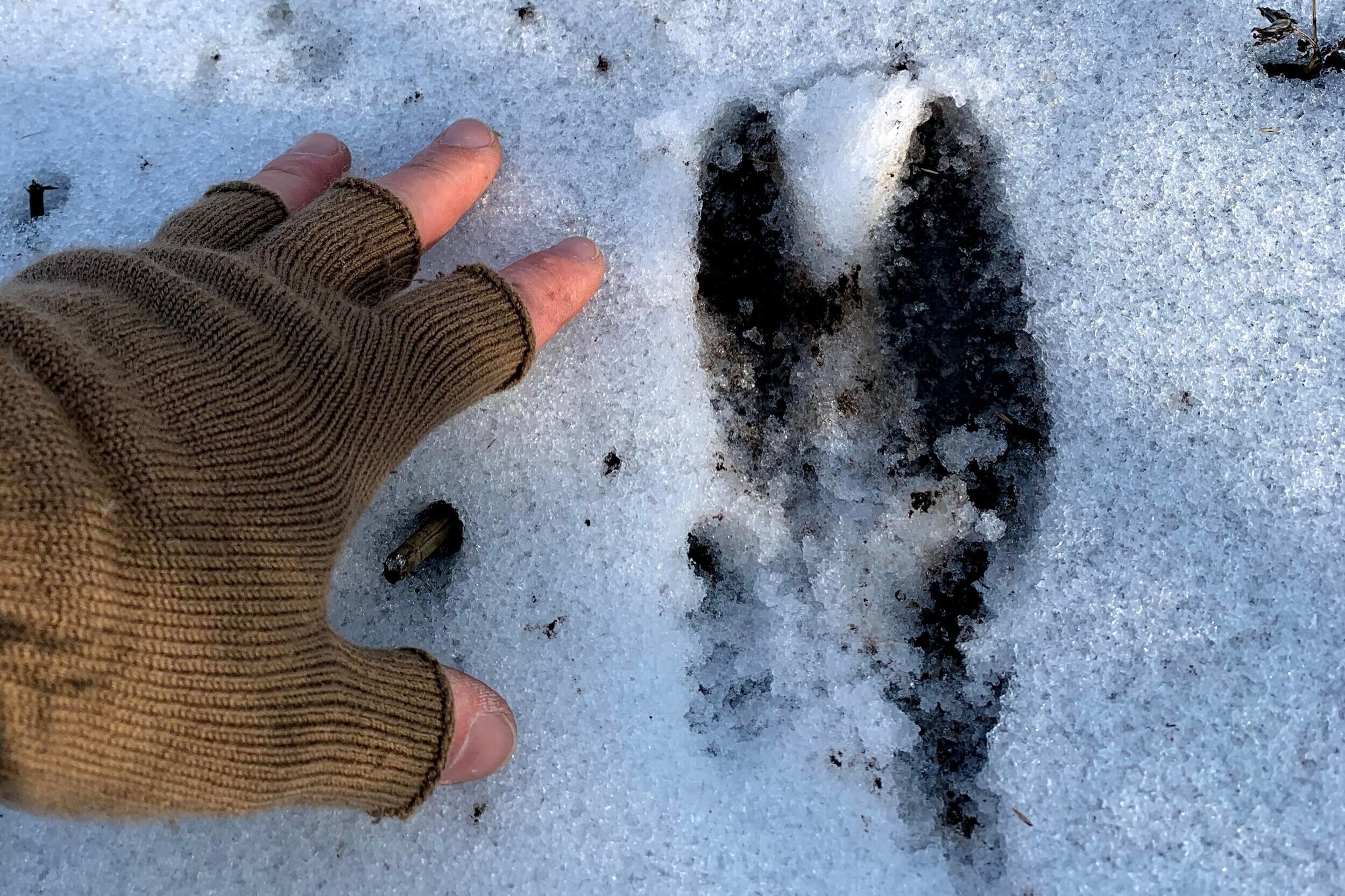How to Track Deer in the Snow
It’s now late season, you've put in copious hours in the stand, most of the breeding deer have bred, and now it time to switch gears to hunting late-season deer
One thing we like to do when the late-season comes around is actively tracking fresh deer tracks in the snow. Tracking deer in the snow can be one of the most exciting ways to hunt deer and can be pretty addictive.
Here’s how to start:
Cut the Area
Finding deer tracks in the snow is pretty easy and really not that hard to do. All you have to do is walk around in your hunting area and you are sure to find a few tracks. If you can’t find any right away start cutting the area
Begin by grid cutting your way around the area like you would grid searching for a killed animal. Eventually, you will find a set of tracks to start following. You may know exactly where to go, but that’s not always the case. Target thicker denser areas where deer feel more secure from all of the hunting pressure.
Finding Tracks
Once you have found a set of fresh tracks, it’s time to determine if you want to follow them or not and there are a few things to consider beforehand:
Track Age
Determining how old the track is can save you a lot of time and effort. Tracks will be old if the snow at the bottom of the track is frozen or if the track itself has started melted away around the track. A fresh track will still be soft and have kicked up snow near it.
Having knowledge of the most recent snowfall can determine a lot too. For example, if fresh snow had been falling in the morning and stops around noon and there are fresh tracks in it, then you know those tracks were made within the past few hours. If they are covered up, then you know those tracks were made before the snow fell. Try and find the freshest tracks you can find.
Track Identity
Finding a lot of deer tracks is great, but finding a lone set of tracks is even better. More tracks mean more deer and it also means more sets of eyes and ears to bust you with. Bucks tend to travel alone, especially during the rut. Look for a solo set of tracks so you aren't worrying about multiple deer.
Quality Track
A mature buck is heavier than a doe and will leave a deeper and wider track. As deer get bigger the added weight of their bodies forces their hooves to spread/splay out wider and even their dewclaws will be imprinted in the snow. The length of the track also determines how old the deer is. A good rule of thumb is to use your hand. A mature buck will have a track 3.5 - 4 inches in length. A good way to measure that is to you your hand. On average a persons four fingers squeezed together is about 4in wide. Use what you have to gauge the age of the animal by their tracks
Tracking
You’ve found fresh tracks and have now determined the tracks are worth following. Now it’s time to do the fun part of tracking the deer. Start following the tracks in the direction they are leading. You never want to walk directly on the tracks in case you have to backtrack, so follow the tracks a foot or two off the path if you can.
As you are tracking the deer, examine how the deer is walking and you can base how fast you can follow based on its movements. A deer walking in a straight line is usually walking with intention and a purpose. If this is the case you can move pretty quickly. Deer cover ground fairly quickly which allows you to do the same. If the tracks begin to weave side to side or circle around a little, the deer was probably feeding or looking for a place to bed down. Now is the time to slow down and pan the areas ahead of you.
When you find the tracks starting to “wander” it’s time to start being stealthy and have planned calculated movements. A bedded buck is always on alert and is easily spooked. If it’s sunny out, try to only walk in the shadows the trees are making. Try bounding from tree to tree for cover. But above all else, scan. Scan the area where the tracks are leading with every step you take. Take one step and scan. Take another step, and scan. Slow and steady wins the race, and stalking deer requires a lot of patience. Be sure not to rush things. It may take you a couple of hours to move a 50 yds, but the key is to spot the deer before it sees you. You may find that you only can see one body part of the deer, or even a quick flick of their ear. Have your weapon ready to go, because your shot opportunity might be only a few seconds.
Tracking deer in the snow is a really fun method to try in the late season after deer are tired of all the hunting pressure and after you’re exhausted from being in the stand. It is also a great way to get some of the youngsters involved in hunting. Have them accompany you on the track can be a great experience for them. Even if you aren't successful, having some teachable moments of hunting might just peak their interest and bring them into the wonderful world of hunting.


